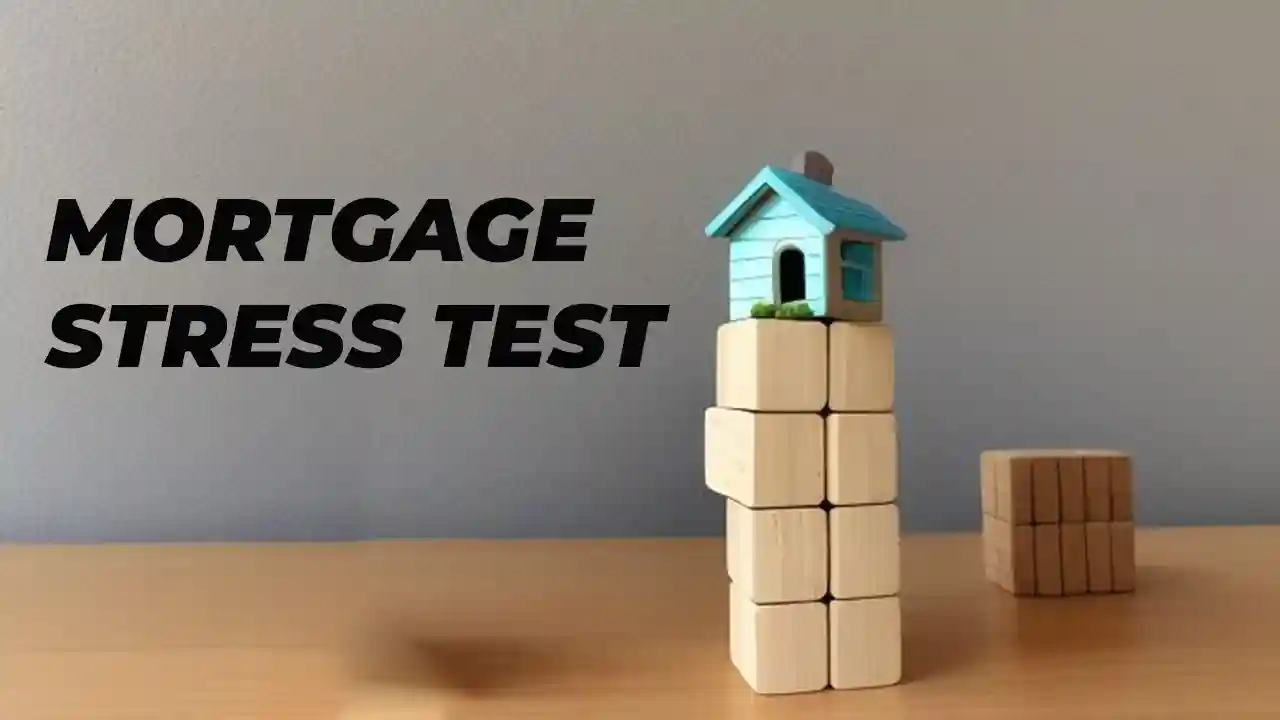Mortgagerateslocal.com – Buying a home is one of the most important and exciting decisions you can make in your life. It is also one of the most challenging and stressful ones. You have to find the right home, negotiate the best price, and secure the best mortgage.
But before you can get a mortgage, you have to pass a test. A test that could make or break your dream of homeownership. A test that could determine whether you can afford to pay your mortgage if interest rates rise or your income drops.
A test that is designed to protect you and your lender from the risk of default and foreclosure. This test is called the mortgage stress test. And it is not easy to pass. We will tell you everything you need to know about the mortgage stress test.
We will explain what it is, how it works, and what factors it considers. Whether you are a first-time homebuyer or a seasoned homeowner, this will help you understand and prepare for the mortgage stress test.
What is the Mortgage Stress Test?
The mortgage stress test is a tool used by lenders to assess whether a borrower would be able to make their mortgage payments if interest rates rose or their income dropped. The test is typically conducted by asking the borrower to provide proof of their current income and debts, as well as their ability to make higher mortgage payments.
The mortgage stress test was introduced in 2018 by the Office of the Superintendent of Financial Institutions (OSFI), the federal regulator of banks and other financial institutions in Canada. The test applies to all federally regulated lenders, such as banks, credit unions, and trust companies.
The test also applies to both insured and uninsured mortgages, meaning mortgages with less than 20% down payment and mortgages with more than 20% down payment, respectively.
The mortgage stress test is designed to protect both borrowers and lenders from the risk of default and foreclosure, especially in the event of a sudden rise in interest rates or a drop in income. The test also aims to prevent borrowers from taking on more debt than they can afford, and to encourage them to save more for a larger down payment.
How Does the Mortgage Stress Test Work?
The mortgage stress test works by simulating a scenario where the borrower has to pay a higher interest rate than the one they are currently offered. The test uses two different rates to calculate the borrower’s maximum mortgage amount: the contract rate and the qualifying rate.
The contract rate is the actual interest rate that the borrower agrees to pay on their mortgage. The qualifying rate is the higher of the following two rates:
- The Bank of Canada’s five-year benchmark rate, which is the average of the posted five-year fixed rates of the six largest banks in Canada. As of January 2024, this rate is 4.79%.
- The contract rate plus 2%, which is the contract rate increased by two percentage points.
The borrower has to prove that they can afford to pay the higher of the two rates, even if they are offered a lower rate by the lender. For example, if the borrower is offered a contract rate of 2.5%, they have to show that they can pay 4.5% (the contract rate plus 2%) or 4.79% (the Bank of Canada’s five-year benchmark rate), whichever is higher. In this case, the borrower has to qualify at 4.79%.
The mortgage stress test also considers the borrower’s gross debt service ratio (GDS) and total debt service ratio (TDS). These are two ratios that measure the borrower’s debt obligations relative to their income.
- The GDS is the percentage of the borrower’s gross income that goes towards paying their housing costs, such as mortgage payments, property taxes, heating, and condo fees. The maximum GDS allowed by most lenders is 35%.
- The TDS is the percentage of the borrower’s gross income that goes towards paying their total debt obligations, such as housing costs, credit card payments, car loans, student loans, and other personal loans. The maximum TDS allowed by most lenders is 42%.
The borrower has to meet both the GDS and TDS requirements at the qualifying rate, not the contract rate. This means that the borrower has to have enough income and low enough debt to pass the mortgage stress test.
How to Pass the Mortgage Stress Test?
Passing the mortgage stress test can be challenging, especially for first-time homebuyers or those with low income or high debt. However, it is not impossible. There are some steps that you can take to improve your chances of passing the test and getting your dream home. Here are some tips and strategies that you can follow:
- Save for a larger down payment. The more money you have for a down payment, the less you have to borrow and the lower your mortgage payments will be. This will reduce your GDS and TDS ratios and make it easier for you to pass the test. A larger down payment will also lower your loan-to-value ratio (LTV), which is the percentage of the home’s value that you are borrowing. A lower LTV will give you access to lower interest rates and more mortgage options.
- Pay off your existing debt. The less debt you have, the better your TDS ratio will be and the more you can afford to pay for your mortgage. Try to pay off or reduce your credit card balances, car loans, student loans, and other personal loans as much as possible. This will also improve your credit score, which is another factor that lenders consider when approving your mortgage application.
- Increase your income. The more income you have, the higher your GDS and TDS ratios will be and the more you can afford to pay for your mortgage. You can try to increase your income by asking for a raise, getting a second job, starting a side hustle, or renting out a room in your home. You can also use a co-borrower, such as a spouse, a parent, or a friend, who has a stable and verifiable income to boost your income and qualify for a larger mortgage amount.
- Shop around for the best mortgage rate. The lower the interest rate you can get, the lower your mortgage payments will be and the easier it will be for you to pass the test. You can shop around for the best mortgage rate by comparing different lenders, such as banks, credit unions, and mortgage brokers. You can also use online tools, such as rate comparison websites, mortgage calculators, and pre-approval applications, to find the best deal for your situation.
- Be flexible and realistic. The mortgage stress test may limit your options and force you to adjust your expectations. You may have to settle for a smaller, cheaper, or less desirable home than you originally wanted. You may also have to delay your home purchase until you can save more money, pay off more debt, or increase your income. Be flexible and realistic about what you can afford and what you can qualify for, and don’t overstretch your budget or take on more debt than you can handle.
What are the Benefits of Passing the Test?
Passing the mortgage stress test may seem like a daunting and frustrating task, but it has some benefits for you as a borrower. Here are some of the advantages of passing the test:
- You will have peace of mind. Passing the test means that you can afford to make your mortgage payments even if interest rates rise or your income drops. You will have peace of mind knowing that you are not taking on more debt than you can handle and that you are prepared for any financial changes or challenges that may arise in the future.
- You will save money. Passing the test means that you are getting a mortgage that is within your means and that you are not paying more interest than you need to. You will save money on interest payments and avoid paying unnecessary fees or penalties for defaulting on your mortgage.
- You will build equity. Passing the test means that you are buying a home that is within your budget and that you are not overpaying for it. You will build equity in your home faster and increase your net worth over time. You will also have more options and flexibility when it comes to refinancing, renewing, or selling your home in the future.
Conclusion
The mortgage stress test is a set of rules that potential homebuyers must pass to qualify for a mortgage. It is designed to ensure borrowers can handle higher mortgage payments if interest rates rise or your income drops. You will have peace of mind knowing that you are not taking on more debt than you can handle and that you are prepared for any financial changes or challenges that may arise in the future.




